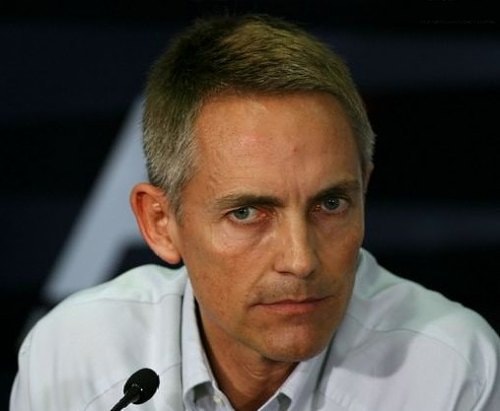After Lewis Hamilton blamed his team twice for ruining his race in Australia – he didn't say it like that, but hinted that the pit strategy for him cost McLaren a 1-2 finish – team principal Martin Whitmarsh decided to come in front of the media and defend McLaren's decision to bring Hamilton to the pits for an additional stop.
While his teammate Jenson Button opted for a single pit stop, Ham was brought in to change his tires for a second time on Lap 34, while running in 3rd place. That eventually dropped him to 5th overall, after which he failed to move up the pack. However, according to Whitmarsh, a pit stop for a fresh set of tires was necessary for Ham, as his driving style on Sunday was much more aggressive than Button's.
“Lewis was losing time behind (Robert) Kubica, you could see he had graining of his rear left tyre and you could see that Michael (Schumacher) had stopped and was going purple, Webber had stopped and was going purple and more than one second per lap quicker. With the information we had at the time, given where Lewis was, we felt that it was the right call,” said Whitmarsh, who admitted that a 1-2 finish would have been possible had Hamilton nursed his tires to the finish line.
“I think in retrospect and hindsight, if we look at how the race played out – if Lewis could have made those tires last then he could have finished at least second today and we would have a 1-2,” added the McLaren team principal.
Additionally, the McLaren boss defended Ham for his outburst at his team via radio, during the last few laps of the race – when he was heard saying “Whose call was it to bring me in? Fricking terrible idea!" – insisting that Hamilton was passionate about winning the Aussie race at the time, and was frustrated with missing out on the victory.
While his teammate Jenson Button opted for a single pit stop, Ham was brought in to change his tires for a second time on Lap 34, while running in 3rd place. That eventually dropped him to 5th overall, after which he failed to move up the pack. However, according to Whitmarsh, a pit stop for a fresh set of tires was necessary for Ham, as his driving style on Sunday was much more aggressive than Button's.
“Lewis was losing time behind (Robert) Kubica, you could see he had graining of his rear left tyre and you could see that Michael (Schumacher) had stopped and was going purple, Webber had stopped and was going purple and more than one second per lap quicker. With the information we had at the time, given where Lewis was, we felt that it was the right call,” said Whitmarsh, who admitted that a 1-2 finish would have been possible had Hamilton nursed his tires to the finish line.
“I think in retrospect and hindsight, if we look at how the race played out – if Lewis could have made those tires last then he could have finished at least second today and we would have a 1-2,” added the McLaren team principal.
Additionally, the McLaren boss defended Ham for his outburst at his team via radio, during the last few laps of the race – when he was heard saying “Whose call was it to bring me in? Fricking terrible idea!" – insisting that Hamilton was passionate about winning the Aussie race at the time, and was frustrated with missing out on the victory.
